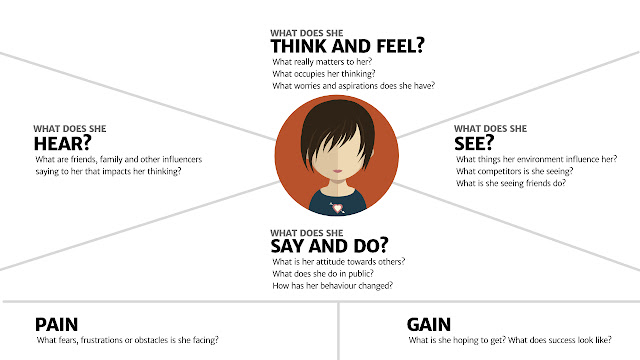15 technologies that will help you become more customer obsessed over the next 5 years
Marketers need to say goodbye to campaigns, say hello to AI-driven conversations with customers
New report on emerging tech in next five years also points to personal data lockers, commonplace augmented reality, and much smarter location analytics.

Marketers will need to transform from campaigns to real-time, continuous interaction with customers via intelligent agents.
So says Forrester Research VP and Principal Analyst Brian Hopkins, co-author (with Adam Silverman) of a new Forrester Research report, The Top Emerging Technologies to Watch: 2017 to 2021 ($499 for individual purchase).
It’s about the top 15 developing technologies that will help businesses become more customer-obsessed over the next years.
Forrester is obsessed with customer-obsession, which it says is essential to a modern brand and which is characterized by several key principles. According to the research firm, such a customer-focused company is led by insights from and about customers, responds quickly and is thoroughly connected everywhere. The report chose 15 technologies for their impact on companies employing these principles.
For marketers, real-time interaction management — one of the 15 – involves the strategizing, analysis, creation and administration of the many intelligent agents that will increasingly populate our lives. Chatbots are the most visible form, but this kind of exchange might also include, say, an ongoing interaction with your smart car.
Real-time interaction management is “starting to allow companies to transform marketing into an ongoing dialogue,” Hopkins told me, as opposed to marketing’s previous goal of pushing messages in a campaign.
This is potentially much more complicated than campaigns. Real-time conversations, for instance, mean that customers and would-be customers become engaged, perhaps emotionally engaged, with chatbots and other such agents. But, to avoid scaring off or boring customers, the conversation needs to be conducted in such a way that brands engage with people and add value to their lives, not constantly badgering them with, say, suggestions they order a pizza.
The challenge here, Hopkins noted, is to analyze the patterns in many conversations to understand what works best, and then apply a new kind of predictive analytics to suggest the best, non-alienating approach to sell something.
 On another marketing front, the report sees augmented reality (AR) as
having a bigger impact on customer-obsessed companies than virtual
reality (VR). For the foreseeable future, Hopkins said, all-enveloping
VR will still be burdened by fairly large headsets and related gear.
On another marketing front, the report sees augmented reality (AR) as
having a bigger impact on customer-obsessed companies than virtual
reality (VR). For the foreseeable future, Hopkins said, all-enveloping
VR will still be burdened by fairly large headsets and related gear.By 2021, the reports predicts, AR will be common, while VR will still be a niche technology.
AR — as shown by the recent Pokémon Go phenomenon — can be enabled with something as modest in size as a smartphone, and it immediately creates what Hopkin described as “a blended world.” It overlays generated imagery on actual live scenes, instead of entirely replacing it as VR does. Certainly, overlaying anything you want on the real world represents a tremendous marketing opportunity.
Two other technologies that will impact marketing, according to Hopkins: location analytics/spatial analytics and personal identity/data management.
Of course, location-based mobile marketing is common these days, but Hopkins describes its current state as “very crude.” It should be able to regularly leverage much more data and acquire many more insights, he said.
For example, he told me as he was sitting in a Starbucks, ads and other marketing should know it’s his birthday, and they should employ that fact.
He wasn’t talking hypothetically. It actually was his birthday, he said.
And, on the personal identify front, Hopkins pointed to the “enormous uptick in consumer [concern] about privacy,” citing Forrester research indicating that 61 percent of consumers have changed their offline behavior and 58 percent their online behavior since the Target credit card hack three years ago.
One result of this new concern will be “personal data lockers,” he said. They will capture and store all of your user data, keeping it safe and allowing you to grant access to brands as you wish. But — as previewed by growing restrictions on user data in Europe — these data lockers could fundamentally change the balance of power between consumers and brands.
The 15 technologies chosen for the report were selected following conversations with analysts and subject matter experts, and reviews of other Forrester reports. The biggest effects won’t start until mid-2019, the report said, because of the time needed for supporting technologies to mature.

There are five each in three categories: technologies that foster engagement to improve the ability to reach and serve customers, ones that encourage insight to turn data into action and ones that support the ability to become connected and fast. Hopkins said the 5/5/5 division just happened and wasn’t planned that way.
The five engagement technologies:
- Internet of Things (IoT) software and solutions;
- Intelligent agents, such as robotic process automation;
- Personal identify and data management, including personal data lockers, authorization management tools;
- Real-time interaction management, like customer recognition, offer arbitration and delivery, measurement/optimization; and
- Augmented Reality (AR)/Virtual Reality (VR).
- AI/cognitive tech, such as deep learning and natural language processing;
- Customer journey analytics;
- Insight platforms, such as new business analytics tools;
- IoT analytics; and
- Spatial analytics, including in-store analytics, location analytics, sensors.
- Security automation and orchestration, such as incident response and threat intelligence;
- Containers and container management. For example, Docker or cloud container management;
- Edge computing, where processing power resides throughout a network rather than in a central location;
- Cloud native application platforms, such Platform-as-a-Service and API management; and
- Hybrid wireless connectivity, where “chips and software […] translate between wireless protocols on same device.”



Comments
Post a Comment